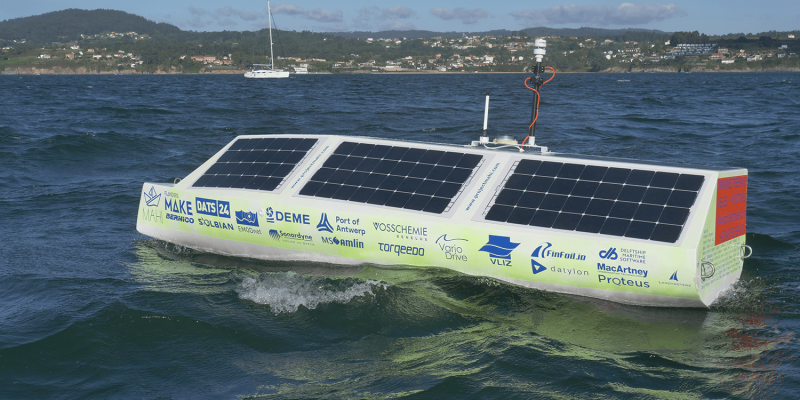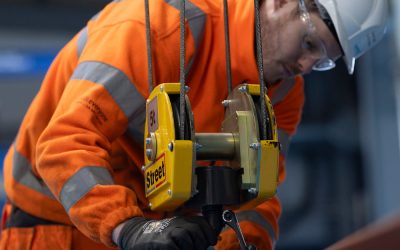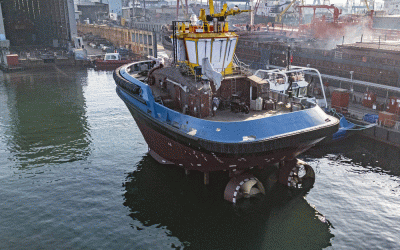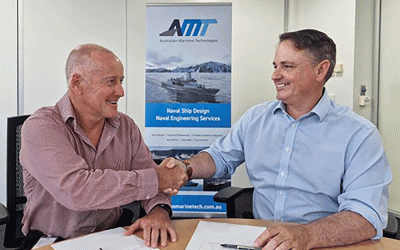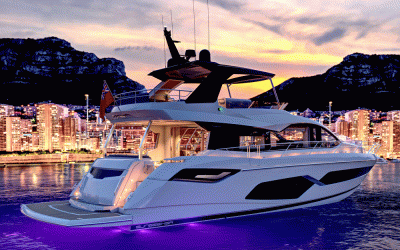On 14 March this year, the Caribbean island of Martinique received an unusual visitor. Arriving on the beach in Le Lorrain was an uncrewed surface vessel (USV), which had made its own way across the Atlantic from Spain, fuelled purely by solar power – a journey spanning some 4,300nm. What’s more impressive is that the 4m USV, Mahi Two, slipped into Martinique unnoticed, months after its developers had pronounced it missing.
The USV was conceived by Pieter-Jan Note, founder of Project Mahi – originally comprising Note and his engineer friends, working from his garage. It was here that the team brainstormed the USV’s design, materials and coding for autonomous navigation, resulting in the development of Mahi One – the first bot to attempt the transatlantic journey, in 2019. Unfortunately, Mahi One wouldn’t make it to the other end: a Beaufort force 10 storm in the Bay of Biscay caused the USV to capsize shortly after its launch. Disappointing as this was, the Project Mahi team gleaned some valuable lessons from the vessel’s journey, which would be used for the design of Mahi Two.
Reflecting on the process, Note tells Ship & Boat International: “One key lesson was to make the vessel fully self-righting, whereas Mahi One had been only partially self-righting. We also decided to make the electronics, and all electrical connections, even more robust to suit the maritime environment.”
Mahi Two’s self-righting monohull was produced in a mixture of basalt fibers, bio-epoxy and recycled polyethylene terephthalate (rPET) core. The USV carried a number of sensors, including: an Airmar 200WX weather-monitoring system and two Aquarian Audio H2a hydrophones. For situational awareness, Mahi Two was also equipped with two GPS modules, an AIS receiver and forward and rearward-facing cameras. “Mahi Two was able to deviate from its route to avoid collisions with other vessels, and did so several times during the voyage,” says Note. “An intelligent algorithm regulated the power and storage onboard autonomously as well, which is crucial for solar-powered vessels.”
Refuelling a diesel vessel in the middle of the Atlantic would have been extremely difficult, if not impossible, so Project Mahi contracted marine e-propulsion specialist Torqeedo to supply a Cruise 2.0 pod drive and a pair of lithium-ion batteries, rated 7,000Wh combined – “the equivalent of 500 smartphone batteries,” says Note. The batteries were replenished by solar energy, captured by five Solbian SP-series panels with a total capacity of 468Wh. “Overcast skies resulted in a reduction of solar power production, but this didn’t affect performance too much,” Note recalls. “At night, however, the vessel had to stop running its motor to maintain battery levels.” The propulsive arrangement granted Mahi Two a cruising speed of 3knots and a top speed of 9knots.
Mahi Two was launched from the Spanish municipality of A Coruña on 22 September. Despite some bad weather, the USV made steady progress in its first few months at sea. “During the entire trip, collision avoidance was live, and we noticed several detections, based on AIS signals, and avoidances during the course of its Atlantic crossing,” says Note. Project Mahi’s AI package also contained an algorithm for the detection of underwater sea creatures, as well as energy management software to regulate the battery levels and onboard propulsive power.
This latter feature alerted the team to one hair-raising incident in January 2022, shortly after the USV had crossed the Mid-Atlantic Ridge. “Mahi Two suddenly started using more power,” Note says. The team feared that the USV was taking on water, and that the bilge pumps were working hard to compensate. A few days later, the communication link between Mahi Two and the shore-based team was lost while the vessel was approximately 700nm off the coast of Martinique. The team frantically tried to regain contact, and alerted the island’s Maritime Rescue Coordination Centre, which in turn contacted a sailing vessel that had passed the USV’s last known position. It appeared that the USV had gone the way of Mahi One, prompting the team to compose a salutary Facebook obituary for Mahi Two on 23 January.
This proved to be a premature send-off. “Two months after we had lost communication, I received a surprise call from the Maritime Rescue Coordination Centre,” says Note. “Mahi Two had been found! The USV had completed its mission.” This conclusion served as a vindication of the team’s hard work and effort, and guaranteed Mahi Two’s place in the evolving history of autonomous vessel development.
(For the full in-depth article, see Ship & Boat International May/June 2022)
